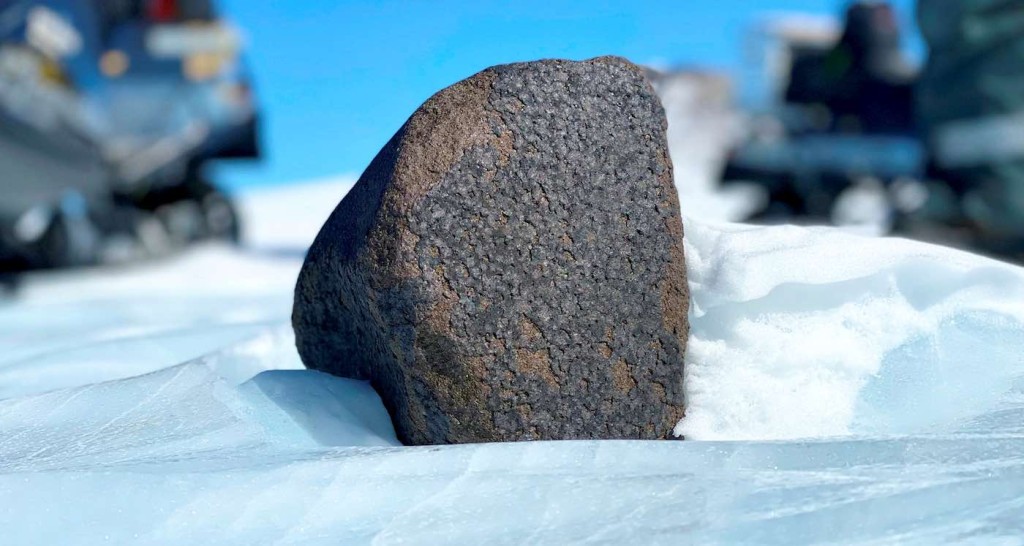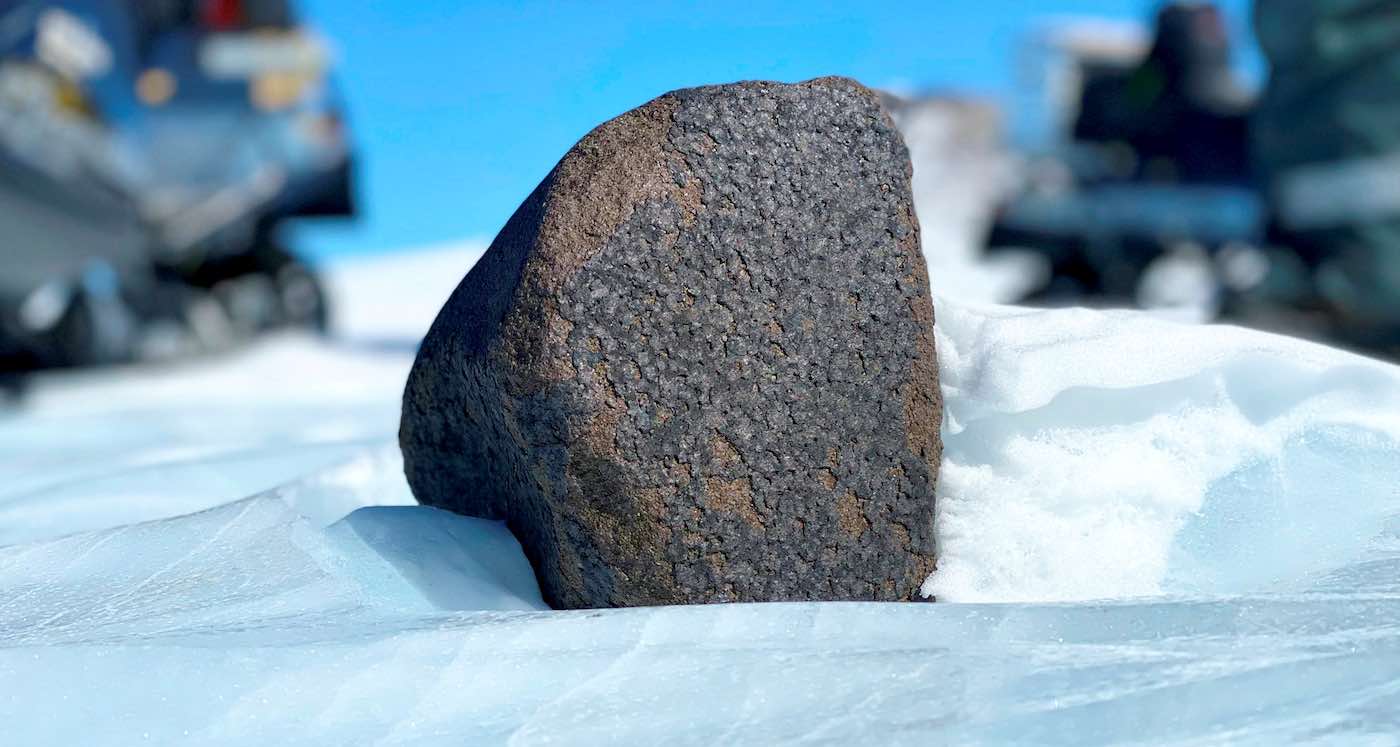
A meteorite containing the oldest material in the solar system has been discovered in Antarctica.
It is one of the biggest ever found—and sheds new light on the evolution of the sun and the planets.
The 17-lb cosmic treasure (7.6kg) was easy to find, as its black composition contrasted starkly against the snow-white ground.
Wilderness with dry cold weather is the best place to search for surviving space rocks because of the perfect conditions for preservation. Active glaciers can also churn up ancient ones buried beneath the ice.
“To find such a large meteorite like this is very rare,” said Dr. Maria Valdes, of The Field Museum in Chicago. “Even tiny micro-meteorites can be incredibly valuable from a scientific point of view.”
In the past century more than 45,000 meteorites have been found on the cold continent, but only about 100 as large as this one.
LOOK: Hubble Captures Rare Event: Star Eaten By a Black Hole 300 Million Light Years Away

Expedition members rode snowmobiles to reach promising landing sites previously mapped using satellite images. They discovered five new specimens near the Princess Elisabeth Antarctica research station.
A computer neural network helped reveal several locations relatively free of snow, where it might prove easier to find them uncovered—and one of them contained the meteorites.
“To find such a big one, this is kind of lucky to be honest,” admitted Professor Maria Schonbachler, of the Swiss Federal Institute of Technology in Zurich.
She says the space rock appears to be a chondrite, the most common type.
These objects contain the oldest material in the solar system and probably originated from the asteroid belt between Mars and Jupiter.
LOOK: China’s New Moon Rock Samples Contain A Beautiful Crystal New to Geology
The meteorite is being kept in a cool box to prevent thawing that could damage its delicate chemical structure. It will be sent to a lab in Belgium for further analysis.
Dr. Ashley King, of the Natural History Museum in London, said, “We don’t tend to find too many meteorites in Antarctica that are as big as this. (But) he more we have, the more we learn about the early solar system.”
RELATED: New Evidence Shows Giant Meteorites Created the Seven Continents When Impacting Earth
GET This Into Your Orbit By Sharing on Social Media…




















